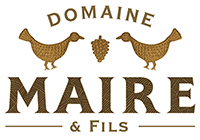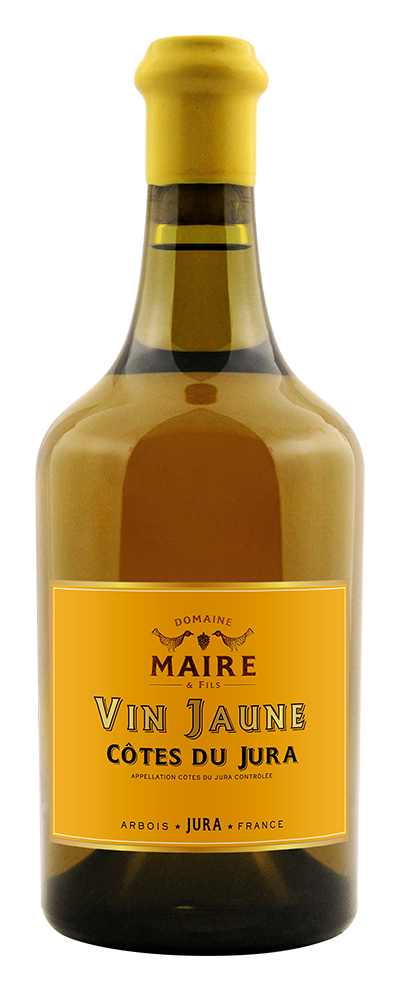VIN JAUNE CÔTES DU JURA

click on one of the vintages below for further information
Several generations have been necessary to patiently built one of the largest and greatest estates in the area, focused on key appellations such as Château-Chalon, l’Étoile and Arbois. The Domaine MAIRE & Fils covers nowadays 234 hectares of vines producing all the area grapes varieties.
For young vines, located on steep slopes, to avoid erosion, we cultivate a row out of two, practice soil reassembly to aerate the lands subjected to settlement due to moisture, and grass with plants. Such as clover, which, by competing on the vine, can modulate its mineral and water supply and control its vigor and yield. The Guyot double size is necessary for the Savagnin to better control its performance. The restructuring of the vines contributes to the harmony of our cuvée: the young vines bring the exuberance, the freshness and the acidity. While the older specimens bring the structure and character of the Vin Jaune
The wine is then intoned in oak barrels, with a “little space” of 5L, so that the development of the veil is done quickly. We seek a controlled oxidation, the veil acting as barrier between ambient air and wine. These barrels rest quietly in our cellars, marked by high thermal amplitudes (between 10° and 23°C) and very dry atmospheres to juggle between finesse and power! Our barrels selection was carried on oak barrels of 5 wines minimum so as not to give 'woody' to the wine. Rich in yeasts and micro-organisms they promote the formation of the veil. Their capacity of 228L, offer the best volume ratio of wine and surface exchange with air to ensure the development of the veil and the specific aromas of this wine.
It is thus aged at least 6 years and three months, without intervention, but with a regular follow-up and an attentive eye. This process, which respects the natural evaporation of the wine, causes the creation of a thin film of yeasts on the surface. The one which patiently nourishes the wine of the famous "yellow taste": complex aromas of walnuts, hazelnuts, almonds, spices…
At the end of its ageing, the resulting nectar is bottled in 62-centilitre (volume of a litre of savagnin remaining after maturation) ‘clavelins’ - bottles specially designed for this wine.

